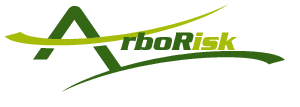Why Auto Insurance Rates are Increasing
Why Auto Insurance Rates are Increasing
Written by Tom Dunn
Commercial auto rates have been increasing at an alarming rate across all industries and the tree care industry is no exception.
This article is meant to shed some light on the causes behind the rate spike and point you to a few resources to help you minimize your cost.
Distracted Driving and Accidents
As with any insurance coverage the rate that you pay is directly connected to the likelihood of a claim happening. Therefore, when there are more accidents, the cost of the insurance goes up.
For many tree care owners, their truck is also their mobile office and just like working in a traditional office, there are plenty of distractions that can take your focus away from what you should be doing. The only difference is in a vehicle, the consequences of lack of focus are always more severe, leading to property damage, injuries and even death.
Distracted driving is the largest cause of motor vehicle accidents and comes in many forms. Some of the most common are:
- Cell phone use: Talking or texting. Even the hands free options can distract.
- Multi-tasking like eating or drinking while driving
- Adjusting controls in the vehicle
- Checking GPS navigation system
- Talking with another passenger
- Looking at something outside car
Inflation
Technology has led to many advances in vehicles that are supposed to make them safer, however that technology comes at an increased cost for consumers when it comes time to repair a damaged vehicle, especially delicate electronics.
Same principle at work with individuals who are injured in a motor vehicle accident. Hospital services have gone up dramatically in cost.
More Drivers
Yes, there were less drivers on the road during the peak of Covid, however, the number of licensed drivers has grown overall to over 230 million across the country.
Inexperienced Drivers
Unfortunately, there are enough experienced drivers with the skills and expertise to drive commercial vehicles to replace the drivers who are retiring. In general, inexperienced drivers have more accidents.
Infrastructure
Old, crumbling roads and bridges increase the wear and tear on vehicles, making accidents more likely. Roads not designed to handle the volume of traffic we see today which leads to more congestion and accidents.
Supply Chain Disruptions
Covid did lead to a decrease in the need for vehicle parts for a short period, however as driving has returned to more normal levels, there has been an increased demand. Sadly, the supply of available parts has not caught up.
Extreme Weather
It doesn’t have to be considered an extreme weather event to lead to an accident, and you don’t have to be a meteorologist to see the increase in extreme weather events. Company vehicles can be damaged just sitting in a parking lot, however, Tree Care companies are often on the road as first responders in extreme weather events thereby increasing their chance of being involved in an accident during a storm.
Huge court verdicts
Also known as “Nuclear Judgements,” these are defined as a verdict in favor of a plaintiff with a damage award over $10M, but can be used for any verdict larger than anyone expected.
One of the insurers that ArboRisk works with recently had a $6M verdict handed down for a motor vehicle accident involving a tree care company. An interesting look behind the reasons for nuclear verdicts shows that how a company addresses safety definitely matters:
- Juries have shown that if a company overlooks workplace safety, doesn’t provide adequate safety training for employees and has a history of repeat violations, they will be punished for their lack of training oversight.
- Failure to utilize available technology (driver monitoring systems, forward collision systems, back-up cameras, voice control-Bluetooth) can also lead to punishment from a jury.
While it may seem like there is no hope for your business auto rates, know that you are not helpless in controlling your own rates. Companies that take driver and fleet safety seriously position themselves to receive the lowest rates possible. We actually recently wrote an article to give you four ways you can lower your rates.
Additionally, every ArboRisk client has access to our extensive driver and fleet management resources on our Thrive website. Not an ArboRisk client? No problem! Enroll in our Thrive Safety Package to get one-on-one help lowering your risk of an auto accident within your company.




Recent Comments